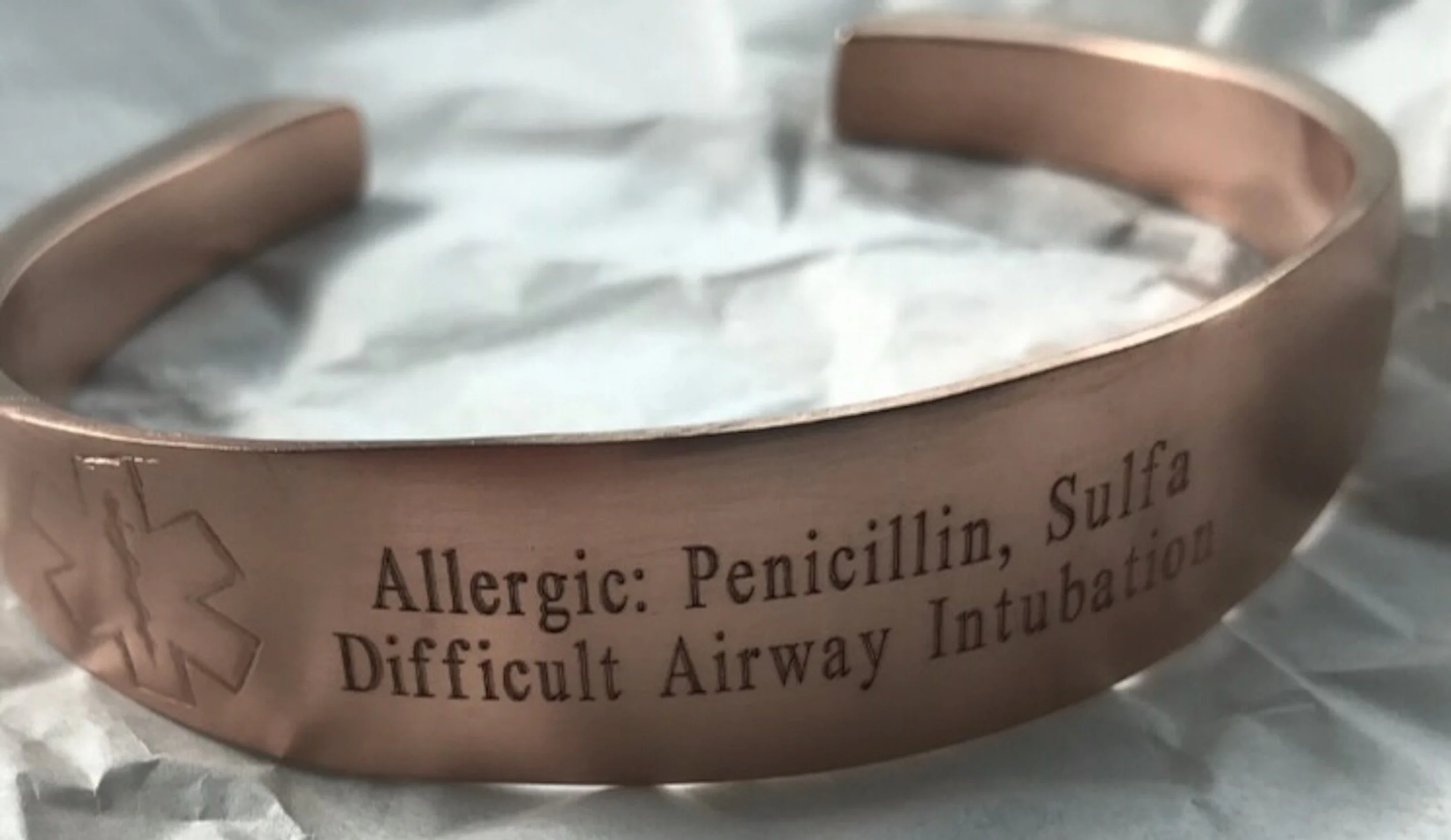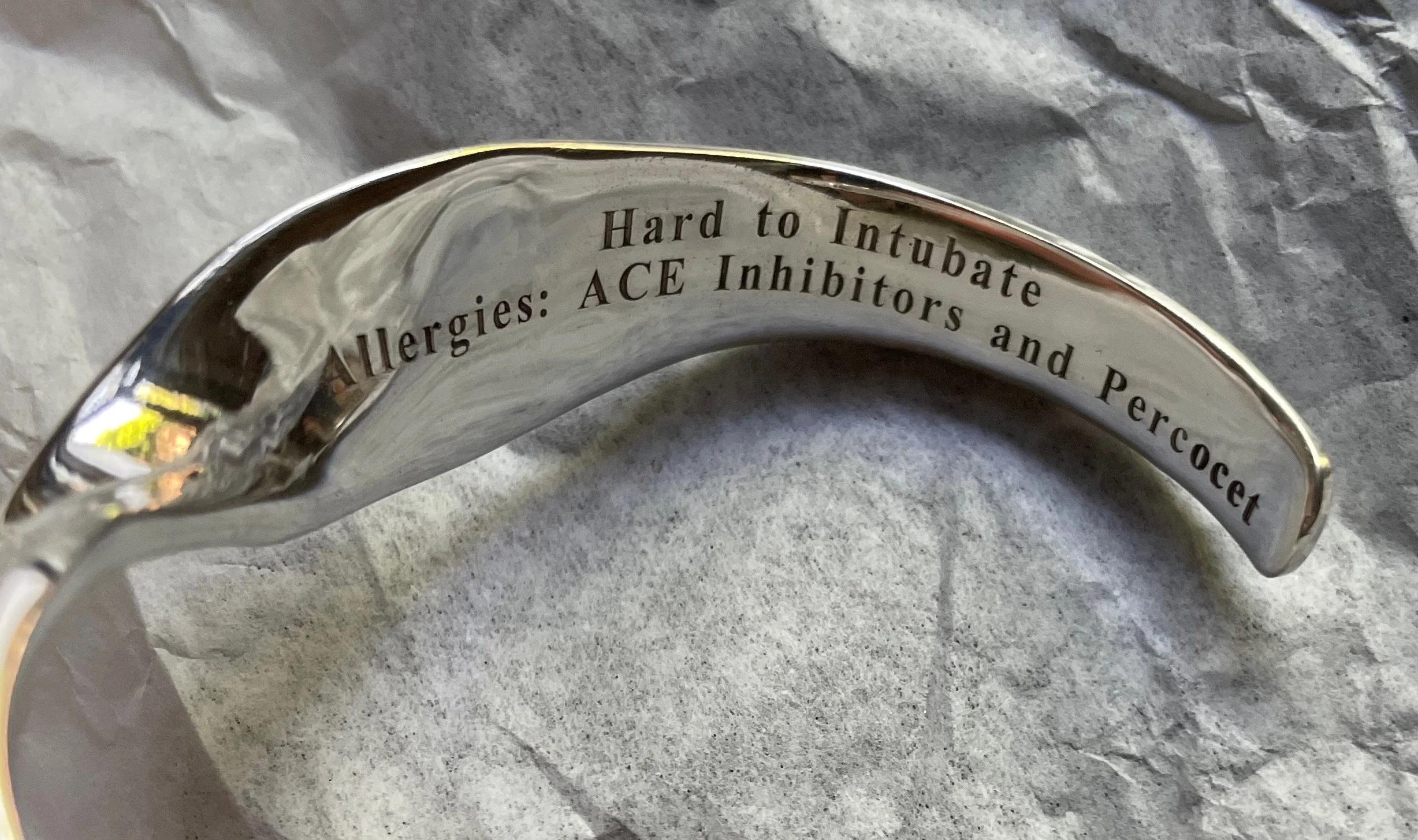Difficulty with Intubation Bracelets
Difficulty with intubation occurs when it is challenging or impossible to insert a breathing tube into a patient's airway. Intubation is a crucial medical procedure, often performed in emergency situations, to provide ventilation support to individuals who cannot breathe on their own due to various medical conditions. It is essential for first responders, such as paramedics or emergency medical technicians (EMTs), to know if a patient is difficult to intubate, as it can affect the choice of treatment and impact patient outcomes. Wearing a medical ID bracelet is an effective way to convey this information to first responders in an emergency situation.
There are several reasons why a person may be difficult to intubate. Some common causes include:
Anatomic abnormalities: Patients with abnormalities in their airway, such as a narrow or twisted throat, may be difficult to intubate.
Obesity: Individuals who are overweight or obese may have excess tissue in the throat, making it challenging to insert a breathing tube.
Trauma: Patients who have suffered facial or throat injuries may have swelling or damage to their airway, making intubation more difficult.
Medical conditions: Certain medical conditions, such as sleep apnea, chronic obstructive pulmonary disease (COPD), or tumors, may make intubation challenging.
In cases where a patient is difficult to intubate, first responders must quickly determine the appropriate course of action to ensure the patient receives the necessary care. The lack of oxygen to the brain for even a few minutes can lead to severe brain damage or death. In such cases, a medical ID bracelet can provide critical information to the first responders, allowing them to make informed decisions and provide appropriate treatment.
What Should The Medical ID Contain?
The medical ID bracelet should contain specific information about the patient's condition, including the reason why intubation is difficult. This information can guide first responders in deciding whether to perform intubation or choose alternative methods of airway management, such as a supraglottic airway device. The bracelet should also include the patient's medical history, current medications, and contact information for their healthcare provider.
Why Wear a Medical ID?
Wearing a medical ID bracelet can also help prevent medical errors. In an emergency situation, first responders must act quickly and may not have access to a patient's complete medical history. The medical ID bracelet serves as a quick reference guide for first responders, providing them with essential information about the patient's medical conditions, allergies, and medications. This information can help prevent medical errors, such as administering medication that may interact with a patient's current medications or cause an allergic reaction.
In conclusion, difficulty with intubation is a significant medical concern that requires prompt attention from first responders. Wearing a medical ID bracelet that clearly states the difficulty with intubation can help ensure that first responders have access to critical information in an emergency situation. This information can guide first responders in choosing the appropriate treatment and prevent medical errors. By wearing a medical ID bracelet, individuals with this condition can have peace of mind knowing that first responders will be prepared to provide the necessary care in an emergency situation.

